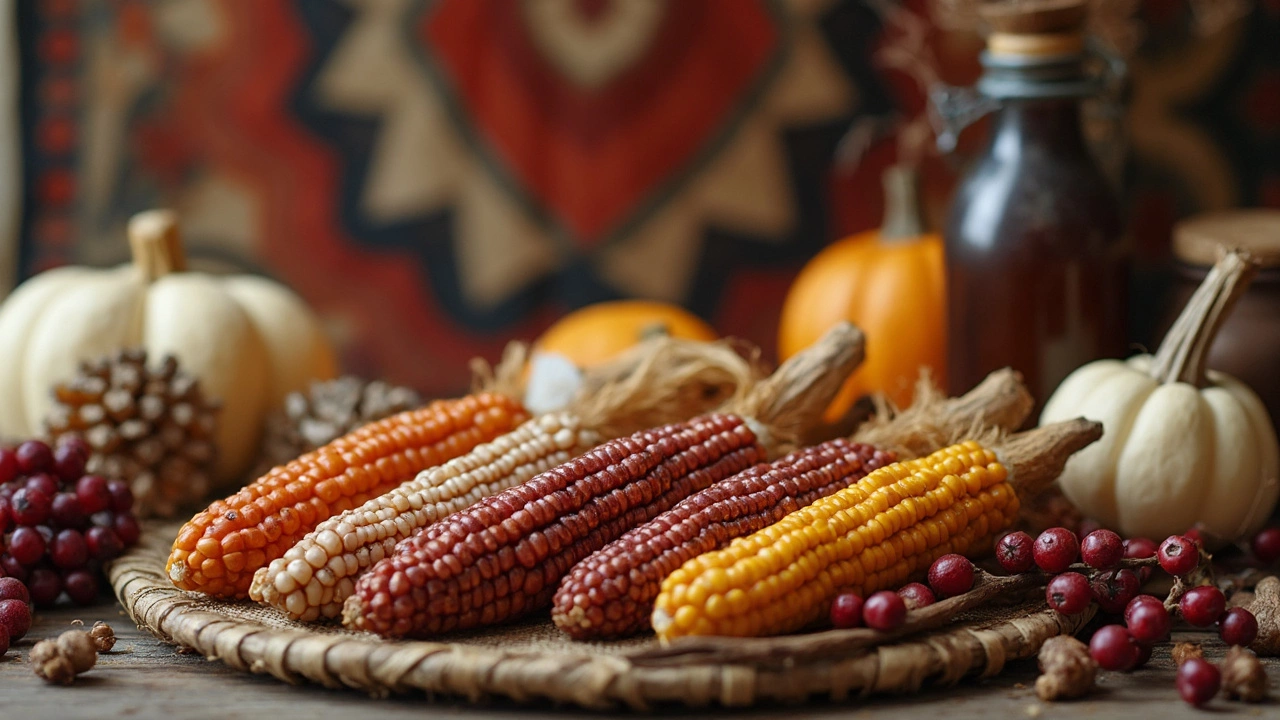Ever wondered what Native American Indians enjoy for breakfast? You're in for some intriguing insights! Breakfast, traditionally, is as much about the story as it is about the food itself. Native cuisines are deeply tied to the land and resources available, making them not just meals, but a heritage on the plate.
So, what's often on the menu? Maize or corn is a big one—think cornmeal porridges like 'Mush' or 'Atole.' Easy to prepare and nourishing, these porridges have been a breakfast staple for generations. The Hopi, for instance, enjoy 'Blue Corn Mush,' a dish that's not only packed with nutrients but also heartwarming. Add some authentic sweetness and you've got yourself a meal.
Another classic is Sweet Potatoes. They've been roasted, boiled, even mashed for centuries. Ever tried a sweet potato hash with a sprinkle of wild herbs? It's as tasty as it sounds. The savory and sweet combo is a morning game-changer.
- Traditional Ingredients and Their Importance
- Popular Breakfast Dishes
- Health Benefits of Indigenous Foods
- Incorporating Native Breakfasts into Modern Meals
Traditional Ingredients and Their Importance
When it comes to Native American breakfasts, it's all about going back to the roots—literally! Many communities have a staple list of ingredients that have been used for hundreds, if not thousands, of years. These ingredients aren't just traditional; they're packed with nutrition and flavor.
Maize: The Mighty Corn
Maize, or corn, holds a prominent place in the diet. It's versatile and can be turned into everything from cornmeal mush to tortillas. Corn has been foundational, not just for its carbohydrate content but also for its cultural significance. Many tribes consider corn to be a gift from the spirits, making it an integral part of their spiritual and daily life.
Wild Rice: Nature's Gift
Another superstar is wild rice. This isn't your regular rice—it's actually an aquatic grass seed. Its chewy texture and nutty flavor make it a breakfast favorite, often tossed in stews or paired with fruits. Wild rice is rich in protein and fiber, offering a direct connection to the land's bounty.
Beans: The Protein Powerhouse
Beans might seem simple, but they've been a protein staple for Native American Indians for ages. From black beans to pinto beans, these legumes are often used in hearty morning stews. Besides being a great protein source, they come packed with essential nutrients like iron and potassium.
Squash and Sweet Potatoes
Savor the earthiness of squash and the sweetness of potatoes, both commonly consumed at breakfast. Whether roasted or mashed, sweet potatoes serve up some smooth energy. Squash, commonly available and easy to grow, boasts a good dose of beta carotene, making it a nutritious choice.
These traditional foods don't just satisfy the stomach; they tell a story and offer sustainable, health-friendly options we can all learn from.

Popular Breakfast Dishes
Exploring the Native American breakfast table is like embarking on a tasty journey through time. Each dish has its roots in history, flavored by diverse traditions across tribes.
Corn-Based Delights
You can't talk about Native breakfast without mentioning corn, a pillar of their cuisine. The Cherokee's version of cornmeal porridge, often enriched with nuts, berries, or bits of squash, is warm comfort in a bowl. 'Atole,' a similar dish from the Southwest, incorporates blue corn and sometimes a hint of honey or spices for added warmth.
Pemmican
Considered a power breakfast, pemmican is a mix of dried meat, berries, and suet—a true on-the-go meal used by many tribes, especially during long journeys. High in energy and nutrients, it stands testament to the brilliance of native sustainable practices.
Wild Rice Treats
Another star is wild rice, which is not rice at all, but a native grain found around the Great Lakes. Cooked wild rice with maple syrup and nuts makes a filling breakfast that's both earthy and slightly sweet. The Ojibwe people have relied on wild rice, or 'manoomin,' for their health and ceremonies, forever linking it to their identity.
Banaha Bread
This one hails from the Choctaw nation—cornbread loaded with beans or wild onions, steamed to give it a hearty texture. Banaha is perfect for those who want something flavorful and original for breakfast.
| Dish | Region | Main Ingredient |
|---|---|---|
| Blue Corn Mush | Hopi | Cornmeal |
| Atole | Southwest | Blue Corn |
| Pemmican | Various Tribes | Dried Meat & Berries |
| Wild Rice Porridge | Great Lakes | Wild Rice |
| Banaha Bread | Choctaw | Corn & Beans |
So, there you have it—each dish packed not only with flavor but also with a rich cultural tale. These traditional foods continue to inspire and satisfy across the globe, making breakfasts more exciting and meaningful.

Incorporating Native Breakfasts into Modern Meals
Blending Native American breakfast traditions into your daily routine can be simpler than you think, and it's a delicious way to add variety and nutrition to your meals. You don't need to overhaul everything; just a few swaps and additions can do the trick.
Start with Ingredients
Swap out your usual oatmeal for a cornmeal-based porridge like 'Atole' or 'Blue Corn Mush.' It's not only a flavorful alternative but also rich in fiber and essential nutrients. You can find these traditional cornmeal products in specialty stores or even online these days.
New Takes on Old Favorites
Consider integrating sweet potatoes into your breakfast. Instead of regular hash browns, try a sweet potato hash. For a simple recipe, dice sweet potatoes, and fry them with onions and bell peppers. Sprinkle in some Native herbs like sage for an authentic twist.
Fusion Recipes
A fun way to enjoy traditional foods with a modern twist is to make a breakfast taco with a Native flair. Use a corn tortilla, fill it with scrambled eggs, beans, and top with salsa and crushed pumpkin seeds, known as pepitas.
Embrace Seasonal and Local
Native American meals often revolve around seasonal and local ingredients. Visit a local farmers' market to find fresh, organic produce which mirrors these traditions. Opt for wild berries during summer or root vegetables in the winter to keep it real and sustainable.
Stepping into the shoes of Native American culinary practices not only broadens your palate but also offers an enriching cultural experience that resonates with history and health benefits. Plus, these meals are easy on the wallet and environment, making them a win-win for any household looking to try something new.
